This is the first part of a two-part lead article, co-written with Frank Mattes.
The – in the truest sense of words – ‘billion-dollar-question’ we are addressing is: How can companies generate more business impact from non-incremental innovation?
The solution to this question lies in the middle part of an end-to-end process for non-incremental innovation. We call this part ‘Scaling-Up‘.
Typically, companies have little problems in generating ideas for adjacent, radical or even disruptive innovation and in validating the most promising ideas. On the other end of the process, companies have systems to grow material businesses and incrementally improve their performance over time. But for many companies, the transitional Scaling-Up phase in-between is a ‘Valley-Of-Death‘, in which many promising concepts die on their journey from idea to business impact.
In this part, we put Scaling-Up in the context of a foundational framework for modern corporate innovation management which we call ‘Dual Innovation‘.
Dual Innovation is a new and unique framework that integrates the two corporate innovation perspectives: Operative Business Units (short: BUs) and Corporate. Its uniqueness lies in designing a distinct ‘Playing Field’ between the explorative (radical or disruptive) innovation domain, managed by corporate units and the exploitative (mostly incremental) innovation domain, managed by BUs. Getting this interface right is of highest importance for companies: In there, today’s core business is reshaped via Scaling-Up and ‘Adaptation’ of the existing core business (e.g. Digital Transformation).
In Dual Innovation, this Playing Field has its own, dedicated operating model, just like the explorative and the exploitative innovation domain. Once companies put these three ‘Playing Fields’ and their operating models under one roof, they have a modern and comprehensive innovation management approach to ‘Optimize the Core‘, ‘Reshape the Core‘ and ‘Create the New‘ at the same time.
The second part of this two-part article – which we will publish shortly – will zoom in and outline the framework for Scaling-Up and some implementation aspects.
Companies are working hard to future-proof their innovation management. They see that the life span of products, services and business models is decreasing – as does the average life span of large companies. They observe that the pace of change accelerates, and that Digital opens a new world of opportunities and disruptive risks. And at the same time, they need to continuously optimize their current core business and push out a constant stream of incremental innovations to maintain the relevance of existing products or services.
This situation poses a tough challenge: How can a company optimize the existing, reshape for tomorrow and create the new at the same time?
Some 15 years ago, ‘organizational ambidexterity‘ was seen as a solution to this challenge. Most companies have already implemented one part of it: Separating operations and incremental innovation from non-incremental innovation. They have set up Innovation Centers, Accelerators, Incubators, Digital Labs, etc. – separated from the operative BUs. Hence, the overall innovation agenda in most companies is split into two disconnected pieces: (A) Radical or disruptive (‘explorative’) innovation managed by dedicated corporate units and (B) Incremental or adjacent (‘exploitative’) innovation, managed by BUs. Latest research backs this split of corporate innovation activities.
However, as statistics (e.g. the ones mentioned in the next section) show, results from non-incremental innovation are still disappointing across the board. So separation seems to be a necessary but not a sufficient condition to win in non-incremental innovation. Consequently, the solution to the above-mentioned challenge requires more thinking than just separating (A) and (B).
But what exactly is the missing piece? This question has been the Focus of our work for almost a decade (see e.g. here or here). Step-by-step, with every client project and every Peer Group (see e.g. here) we sharpened our thinking. The conclusion that we arrived at is that in many companies the second part of organizational ambidexterity – the ‘integration part‘ – is highly under-represented and needs to be designed.
This part is not just an academic construct. As will be shown below, it is a mandatory piece which ensures three things:
- Scaling up validated innovation concepts to a material business (i.e. reshaping the core business from outside-in)
- Adaptation of existing businesses (i.e. reshaping the core business from inside-out), e.g. via Digital Transformation
- Establishing a modern corporate innovation management
Growing interest in connecting separated innovation plays
In the past, many companies allocated innovation resources mainly to ‘safe bets’ and only a small fraction to uncertain initiatives. Quite often, the ‘Google Ratio‘ of a 70-20-10 percent split of resources between incremental, ‘adjacent’ and ‘radical/disruptive’ innovation was applied.
Recent research has shown that companies are shifting this split to a 50-30-20 ratio. In other words, funding for incremental innovation is being re-directed from incremental to non-incremental innovation.
But throwing more money into non-incremental innovation alone does not produce results. To quote serial entrepreneur and Stanford professor Steve Blank: Even validated innovation concepts struggle to get deployed at scale due to two root-causes: (a) Lack of connection between innovation venture and core and (b) lack of an end-to-end process, comprising proper transition of the innovation into the core.
And so it is no surprise that interest in how explorative and exploitative innovation should be connected has increased. In the last two years, Innosight’s Dual Transformation and Accenture’s Wise Pivot have gained attention. Accenture was able to provide some statistical data:
- Out of a sample of more than 1,400 companies, only 6% excel in working on ‘Optimize the Core’, ‘Reshape the Core’ and ‘Create the New’ concurrently. Two out of three companies do not know at all how to do this or have just taken the very first steps.
- Getting ‘Reshape the Core’ right pays: Excellent companies command higher financial results, both in revenue and in EBITD.
- 60% of the excellent companies see ‘Reshape the Core’ as key driver for future-proofing their company, versus just 28% of the remaining companies.
Three Playing Fields – three distinct innovation operating models
In our view, existing approaches to connect explorative and exploitative innovation fall short in addressing how ‘Optimizing the Core’, ‘Reshaping the Core’ and ‘Creating the New’ could be done concurrently, because they
- miss to offer a comprehensive set of dimensions for an adequate design of the interface.
- focus on how the individual venture might be scaled up but do not design the system that builds a Scaling-Up capability from which every scale-up benefits.
- are based on a ‘greenfield start-up’ vision, not on a corporate ‘brownfield’ reality. But the art of Scaling-Up is leveraging corporate assets and capabilities (e.g. brand, customer access, experts, infrastructure, networks / ecosystems, supply chain management and operations) while avoiding being slowed down by ‘corporate antibodies’.
- do not acknowledge that there exist different Scaling-Up pathways (internal / external, multiple spin-in / spin-out junctions).
By changing the viewpoint on the connection between explorative and exploitative innovation, a modern approach to corporate innovation management can be designed. Once this connection is seen as a dedicated ‘Playing Field’ with a dedicated operating model, the challenge stated in the second paragraph of this article can be addressed by putting three Playing Fields – each of them with a dedicated and distinct operating model – under one roof:
Playing Field 1 – Optimize the Core: Exploit existing businesses / S-curves through incremental innovation within a known technology base and an existing business model, using linear Stage-Gate processes.
Playing Field 2 – Reshape the Core: Ensure (a) Adaptation of core business via industrializing ‘new but proven’
technologies and / or ‘some changes to the business model’ (e.g. X-as-a-Service for the same customer base) and (b) Scaling-Up.
Playing Field 3 – Create the New: Find and validate new businesses / S-curves through exploration of new-to-the-company (or new-to-industry/-to-the-world) technologies and/or business models, using Build-Measure-Learn frameworks (e.g. Design Thinking, Lean Start-up or Sprints).
In this set-up, Playing Field 2 is a mandatory piece in a modern corporate innovation management with its own, dedicated operating model, establishing
- an end-to-end-process for radical or disruptive innovation initiatives.
- the foundry in which Adaptation initiatives (e.g. X-as-a-service strategies in Digital Transformation) play out.
We prefer the term ‘Playing Field’ to the more familiar term ‘Horizon’ for two reasons. Firstly, since language shapes thinking, a ‘Horizon’ terminology shapes thinking towards arranging static and distinct containers for distinct innovation domains and keeping things neatly separated. However, as shown below, this will not ensure that ‘Reshape the Core’ via Adaptation and Scaling-Up will succeed. Secondly, and much more important: Every Playing Field requires a distinct innovation operating model.
Many companies have already recognized that Playing Fields 1 and 3 need their own and distinct operating models (comprising e.g. dedicated governance, funding, methodology, processes, culture, leadership, etc.) to be effective. One can’t manage non-incremental innovation with an operating model suitable for incremental innovation and vice versa.
Playing Field 2 also needs its own dedicated innovation operating model because Adaptation as well as Scaling-Up requires a significant, effective and productive interplay between corporate, explorative innovation units and BUs / central corporate functions – which is a fundamental difference between Playing Field 2 and the other ones.
As many companies have found, establishing this interplay is hard. One of the key reasons is that corporate innovation units and BUs / central corporate functions run on disparate paradigms (e.g. agility vs. predictability, mid-to-long-term vs. short-term focus, managing uncertainty vs. minimizing risk). These different paradigms will inevitably lead to ‘Areas of Tension‘.
Neither the Playing Field 1 operating model (linear, Stage-Gate etc.) nor the Playing Field 3 operating model (iterative, Build-Measure-Learn etc.) provides mitigation for the Areas of Tension – let alone addressing governance, funding, KPIs / metrics, HR issues, etc. Consequently, Playing Field 2 needs its own, distinct operating model.
Designing this operating model is not trivial but manageable. It starts with the question who owns Playing Field 2. There are three basic options: Corporate, BU or a well-defined shared responsibility. From there, the other parts of the operating model can be developed.
To come back to our original point: A static ‘Horizon’ box is a gross over-simplification of what it takes to win in Adaptation and in Scaling-Up.
Dual Innovation integrates the two corporate innovation perspectives
Integrating the BU / exploitative and the Corporate / explorative innovation perspectives via a Playing Field 2 with a distinct operating model is what makes up a modern, future-proof corporate innovation management. We have coined the term ‘Dual Innovation‘ for the underlying framework.
In practice one finds that four supporting elements, over-arching explorative innovation, exploitative innovation and Playing Field 2, are needed for Dual Innovation:
- Comprehensive corporate vision, mission and strategy
- Senior leadership alignment and engagement
- Dual Innovation Management (operationalizing activities and functions, portfolio management, etc.)
- Comprehensive management of capabilities and competences
The ‘House of Dual Innovation‘ visualizes this framework for a modern corporate innovation management:
Playing Field 2: The Scaling-Up challenge
Interestingly, while there is a growing body of insights on how Adaption – in particular Digital Transformation – can be managed, there is surprisingly little insight on excellence in Scaling-Up.
In search of Scaling-Up excellence, we have had the great opportunity to work with premier companies – one in the Fortune 15 and several in the Fortune 200 – on how to become better in scaling up validated non-incremental innovation and how to build the company’s Scaling-Up capability.
In the second article of this two-part article series we will share some insights on how this can be done.
Sharpen your thinking: Book and Webinars
We are publishing a book on Scaling-Up in Q4/2018, which is being co-created with our clients, first and foremost members of the above-mentioned Peer Group. This book will provide an in-depth look into the Scaling-Up framework, how it could be implemented and several case studies from leading companies.
We will also be hosting two Webinars soon. Webinar 1 will be held on October 23, 5.30 p.m. (German time) on the topic of this article, webinar 2 on October 25, 5.30 p.m. (German time) will be focussing on the Scaling-Up issue. These webinars will be open for all corporate practitioners. To put yourself on the list, simply send us (Ralph-Christian Ohr or Frank Mattes) a message on LinkedIn or share this article within your LinkedIn network.
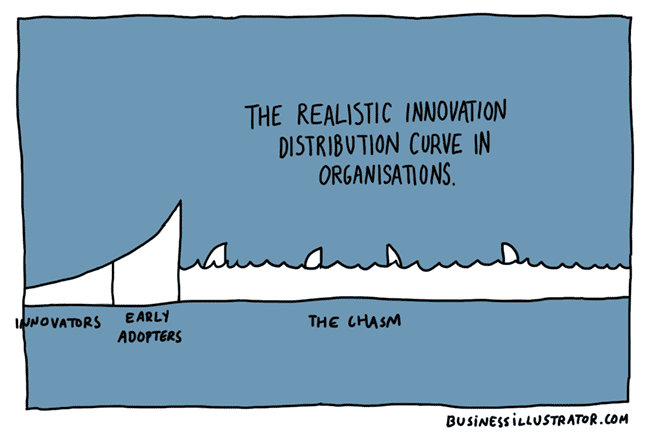
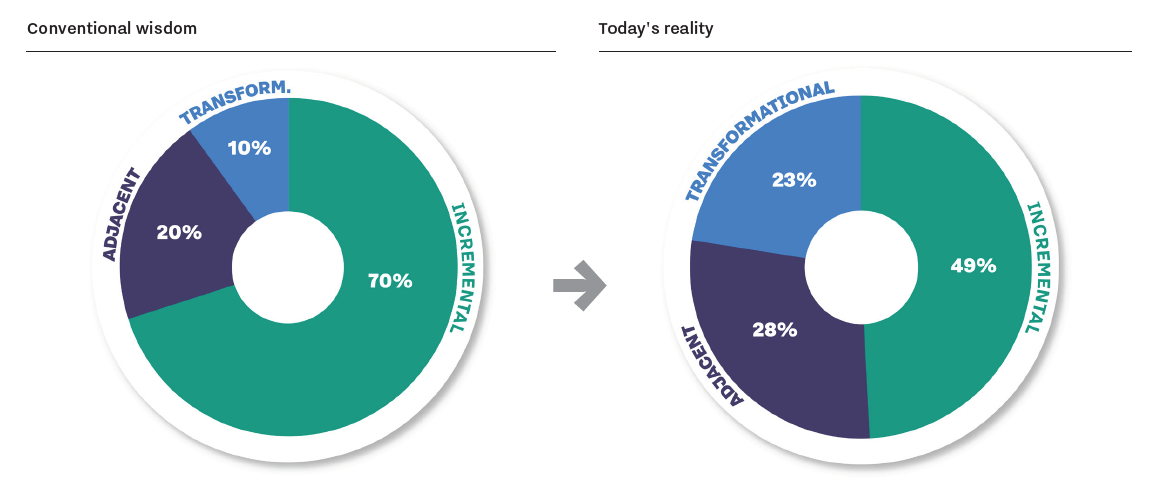
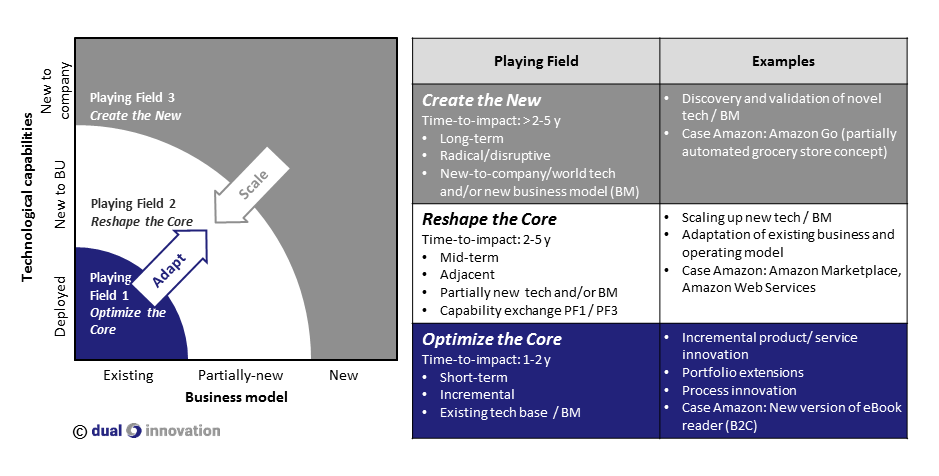
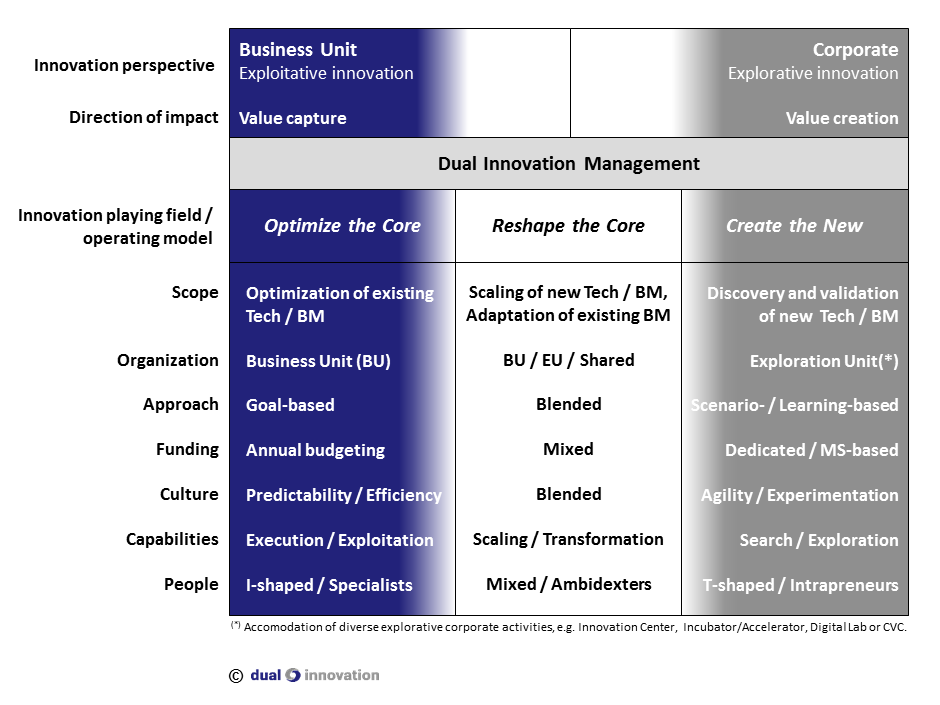
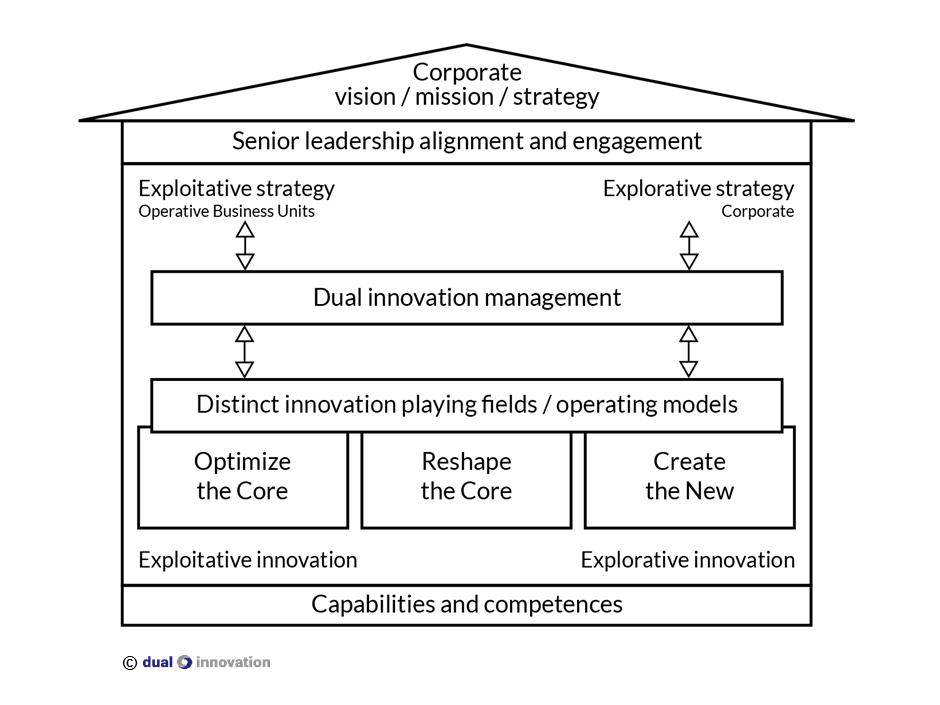








[…] preceding thoughts tie in with our proposed Dual Innovation approach (see visual below). Key principles thereof […]
[…] preceding thoughts tie in with our proposed Dual Innovation approach (see visual below). Key principles thereof […]
[…] preceding thoughts tie in with our proposed Dual Innovation approach (see visual below). Key principles thereof […]
[…] preceding thoughts tie in with our proposed Dual Innovation approach (see visual below). Key principles thereof […]
[…] previous ideas tie in with our proposed Dual Innovation method (see visible under). Key rules thereof […]
[…] Scaling up: The foundation […]